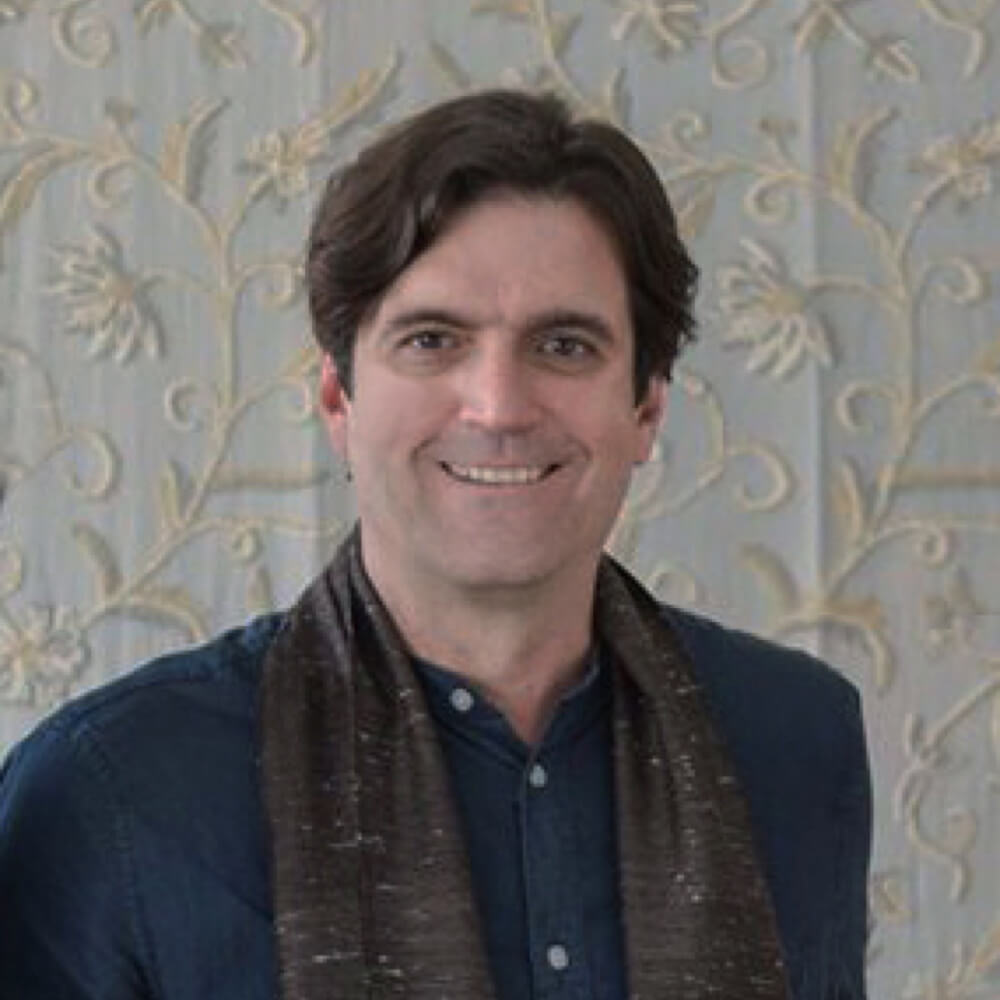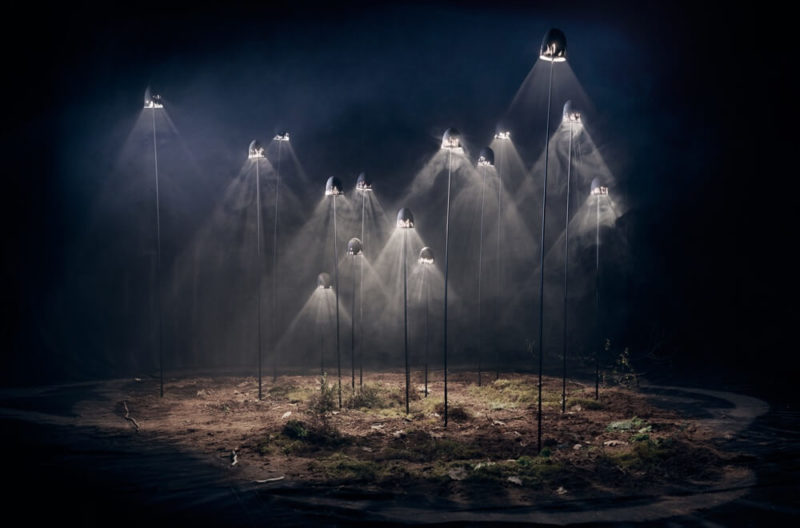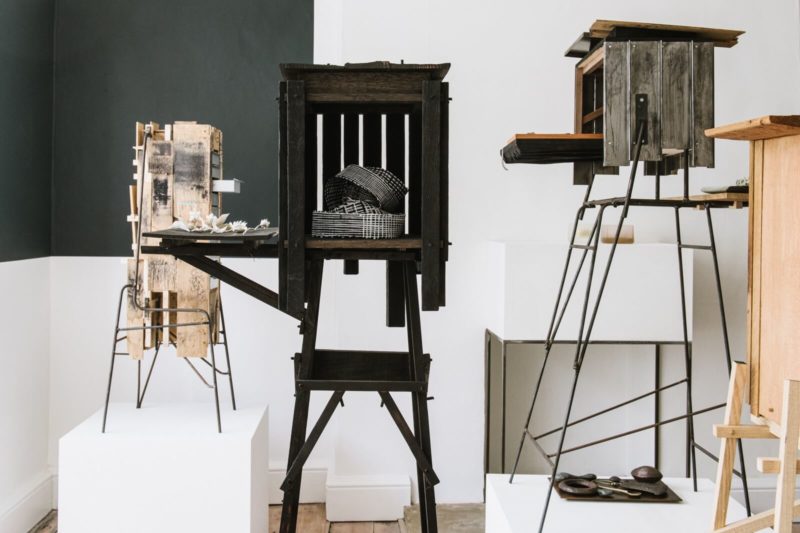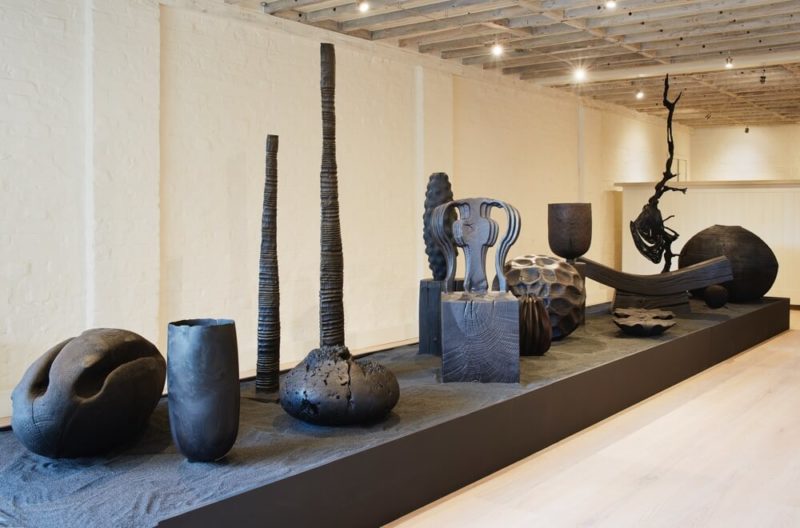Puryear and Hurwitz
A furniture collaboration for the Glenstone Museum.
WHEN EMILY AND MITCHELL Rales, art collectors and founders of the Glenstone Museum outside Washington D.C., opened the institution in 2006, they wanted everything about their museum to enhance the visitor experience. From the number of people attending (only 400 visitors allowed each day), to the staff training, as well as the ‘no photography inside’ policy – and of course the architecture – every little detail was researched through countless trips to other art museums worldwide. In an era of over-crowded museums, their goal has been to create a place where the contemplation of art is the focus, not high visitor numbers. Quality versus quantity.
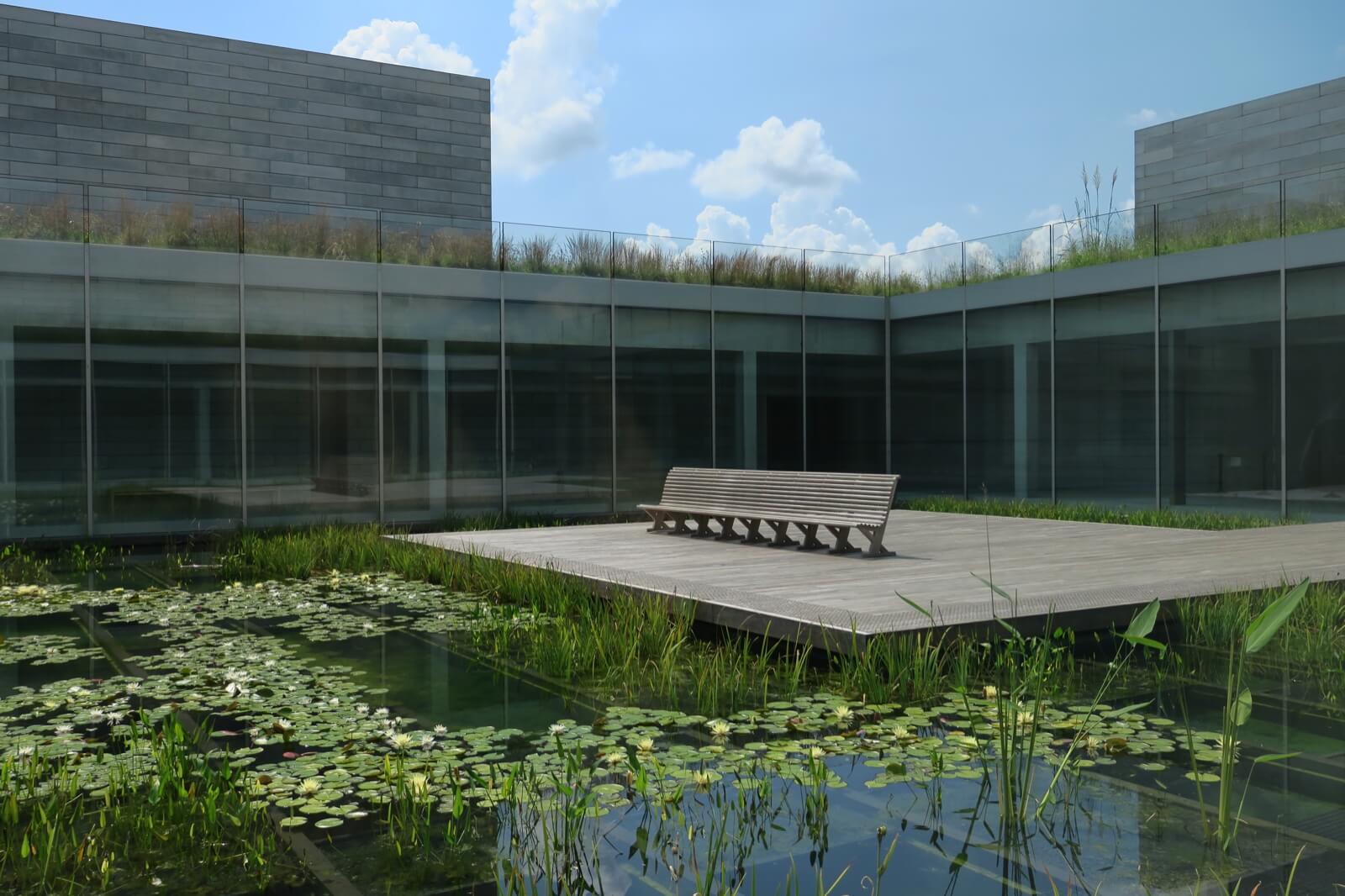
Outdoor seating at the platform over the water pond
COURTESY: Paul Clemence
So, when it came to furnishing the new expansion, known as the Pavilions, designed by architect Tom Phifer and opened in 2018, it was important to them that the furniture also be exceptional, and fit with the overall museum philosophy and design. Phifer’s scheme, an understated series of rooms laid around a water atrium, favoured minimalism and subtlety. During a visit to the studio of Martin Puryear, one of the artists collected by the Rales and prominently showcased in the museum, and who is representing the United States at this year’s Venice Biennale, a chair caught the eye of Emily Rales. Learning that it was designed by Puryear himself, she invited the artist to design the seating for the non-exhibiting areas of the museum.
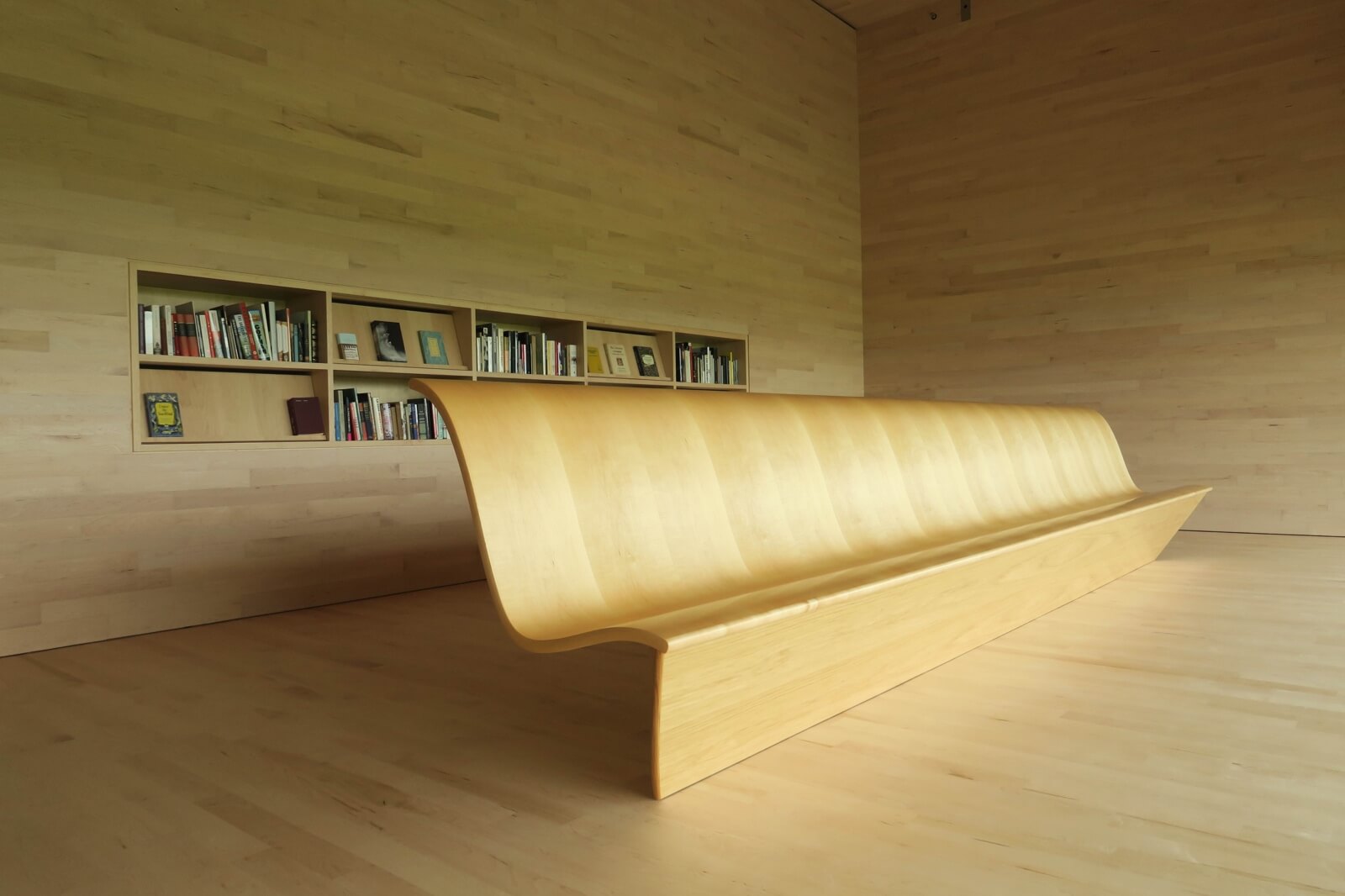
‘Curved Bench’, 2018
COURTESY: Paul Clemence
Known for his elaborate sculptures that are at once abstract and yet resonant with historical and political meanings, craftsmanship has always been an important element in Puryear’s work. Since an early age he has dabbled in making boats, musical instruments and other objects. He has also long been interested in furniture design, creating pieces for his own use. He sees these as an exercise in a form of making similar to sculpture although with a rather different purpose. Puryear commented at the opening last year: “I fully accept the functional requirement for furniture, as an opportunity rather than as a constraint”. Another important distinction is between furniture created for personal use and furniture for a broader public. “I had to put aside assumptions behind the domestic work I’d become accustomed to making and began to think about what it can mean to create objects to be used by a succession of strangers,” said Puryear.
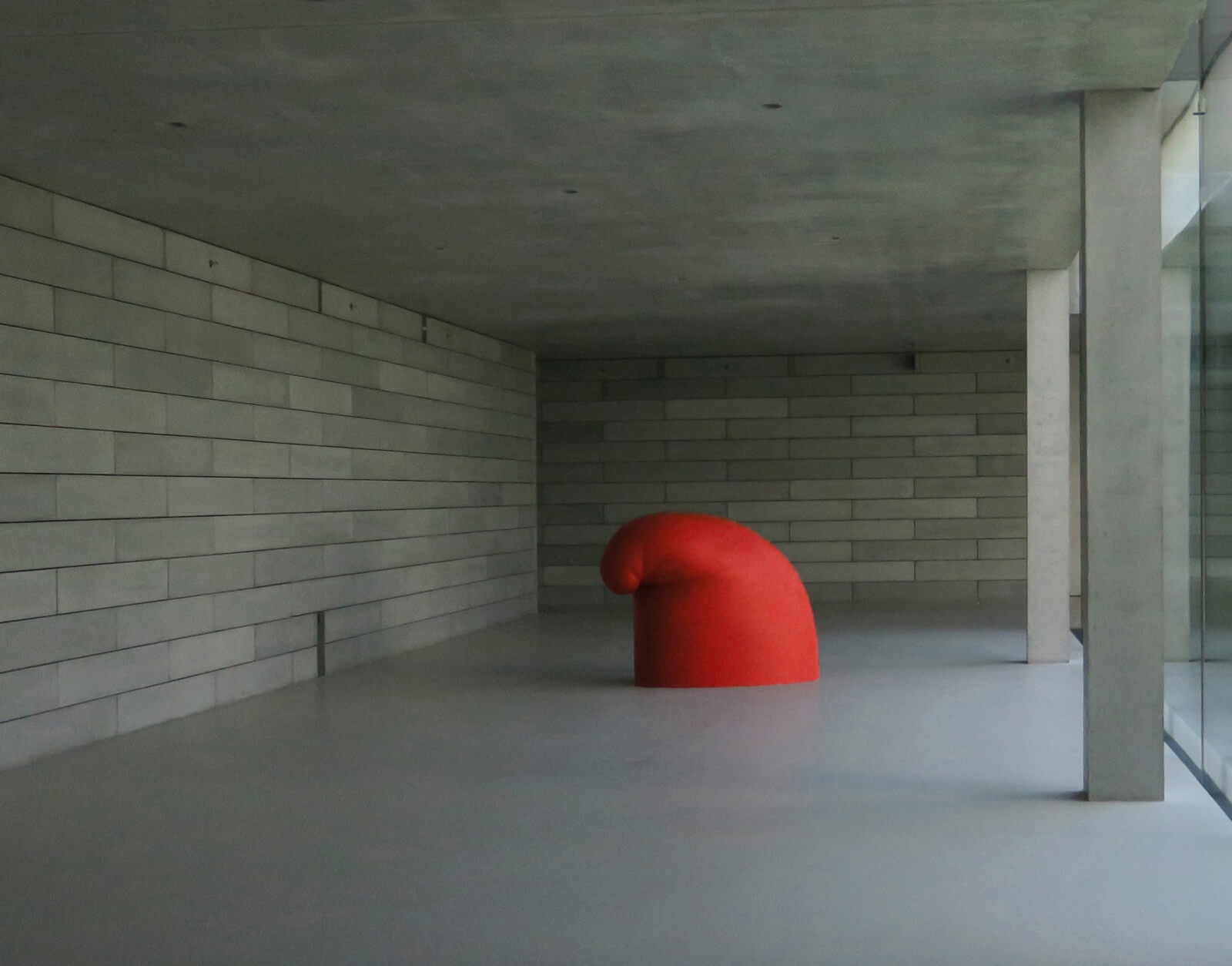
Martin Puryear, ‘Big Phrygian’, 2010-4
COURTESY: Paul Clemence
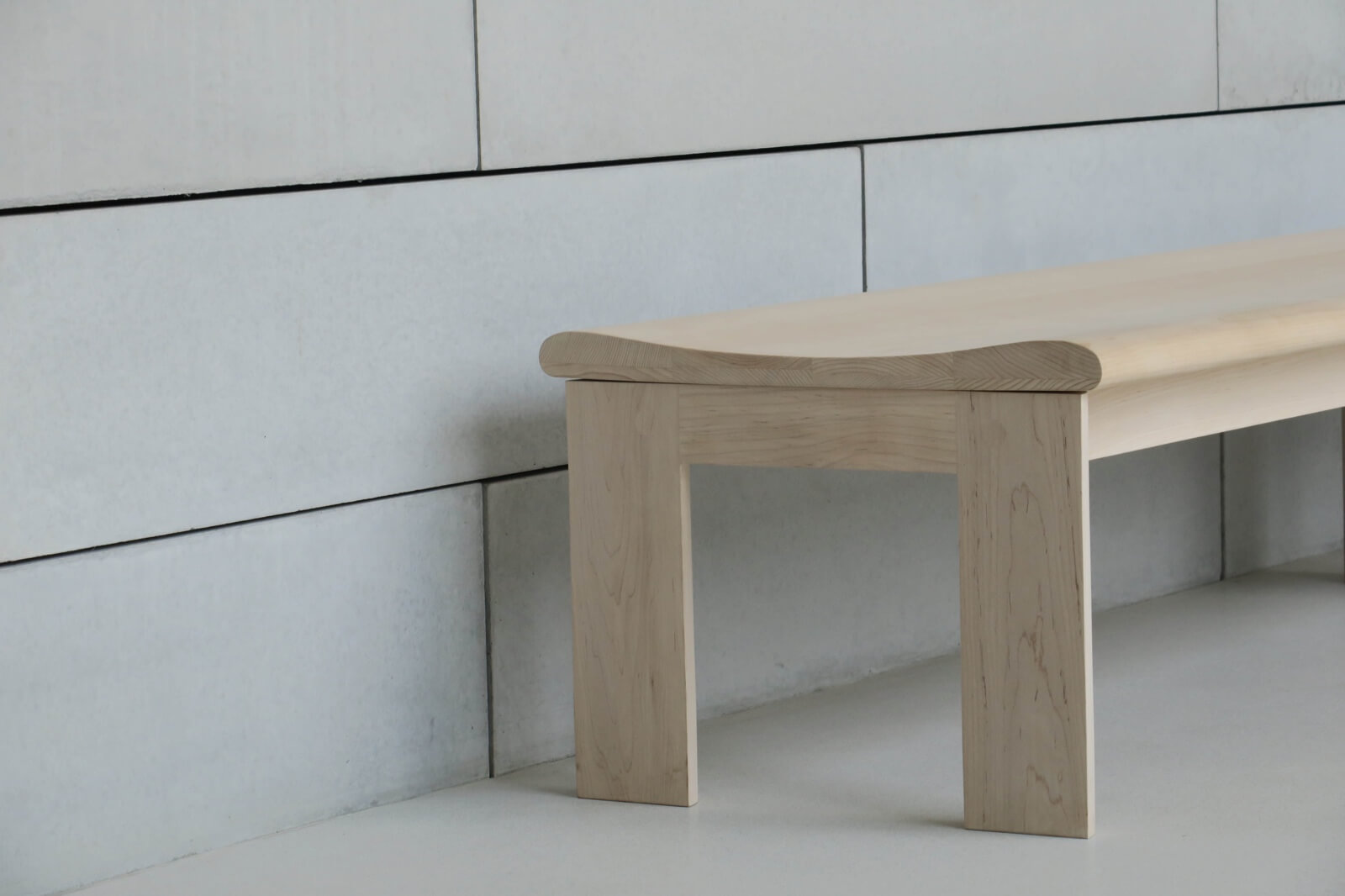
Side view of hallway area bench
COURTESY: Paul Clemence
To help develop his ideas, the artist enlisted the assistance of award-winning designer Michael Hurwitz, known for his elegant designs and exceptional craftsmanship. Puryear explained “Although the materials and methods used in some of my wood sculpture are the same as those I use for furniture, and there may be formal similarities between both areas, (like a predilection for a certain kind of curve or connection, for example), the actual conception is very different when the final result is to be a useable object, rather than an object for contemplation on its own terms.”
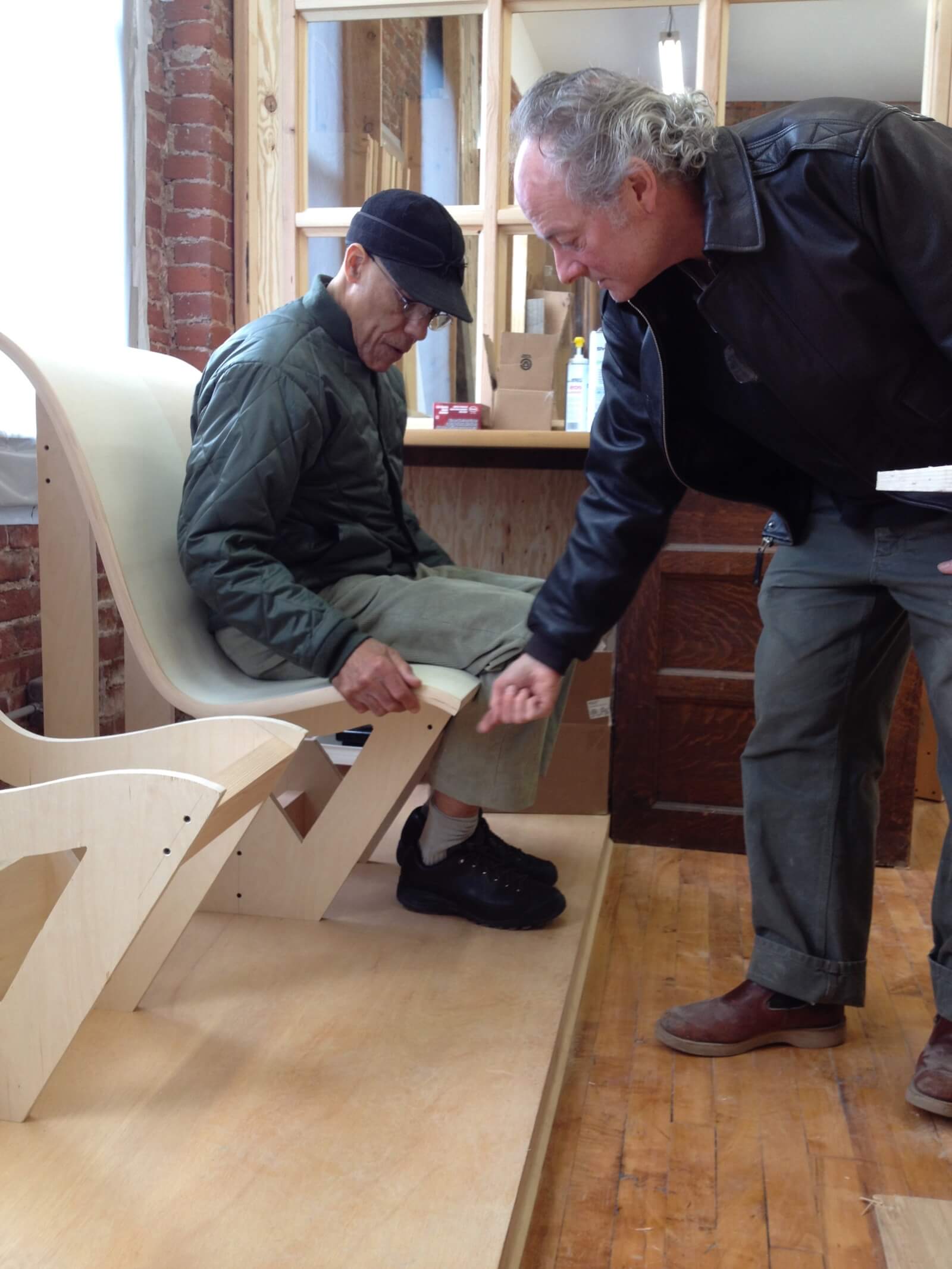
Martin Puryear and Michael Hurwitz discussing the comfort and shape of the mock-up
COURTESY: Glenstone Museum / PHOTOGRAPH: Zack Deluca
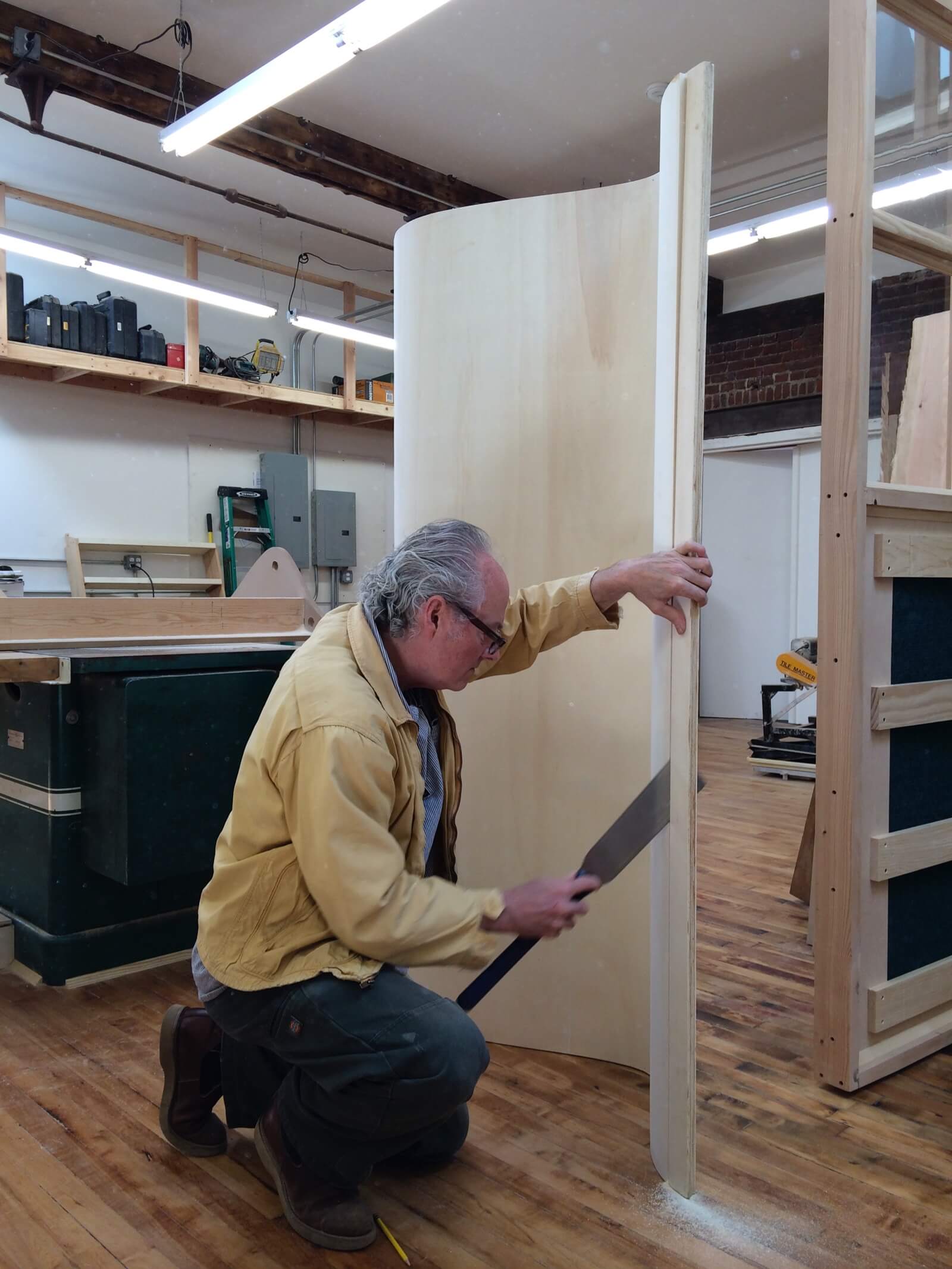
Michael Hurwitz trimming an edge of the first section of the viewing room bench
COURTESY: Glenstone Museum / PHOTOGRAPH: Zack Deluca
Of the collaboration, Puryear reported that Hurwitz introduced him to some fresh ways of thinking about design, about materials, and about methods of fabrication unfamiliar to him. “It was a deeply satisfying experience, and the project owes its success to his knowledge and his high standards,” he said. For Hurwitz, there was also an offspring from their collaboration. The sinuous lines of the seating they created ended up inspiring a new chair design. “As I was working on that long bench, I kept thinking that I’d like to make a domestic-sized piece that allowed all that beautiful activity to be seen within a smaller footprint”, said Hurwitz.
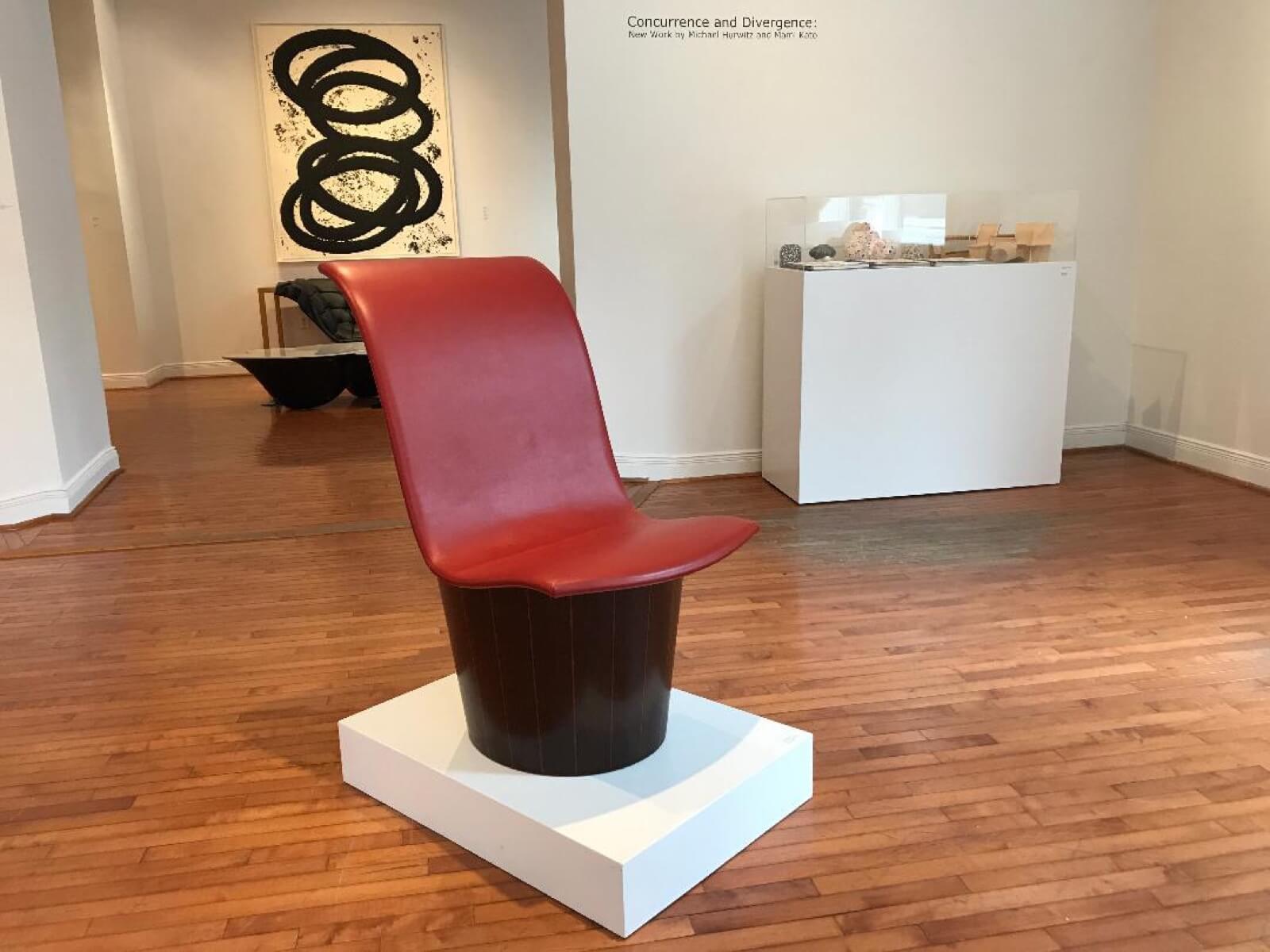
Michael Hurwitz, ‘Tapered Oval Chair’, 2019
COURTESY: Wexler Gallery
The special seating pieces grace three areas of the museum: the light-filled hallways facing the water atrium; the viewing room (an art break rest area facing the landscape); and a platform that protrudes over the waterlily-filled atrium. The design has simple lines but is sophisticated in its sense of shape and proportion. The pieces evade the pitfall of trying too hard to create ‘artful furniture’; instead, they are unique but unpretentious. Just well thought through, inspired and well crafted – like good furniture should be.
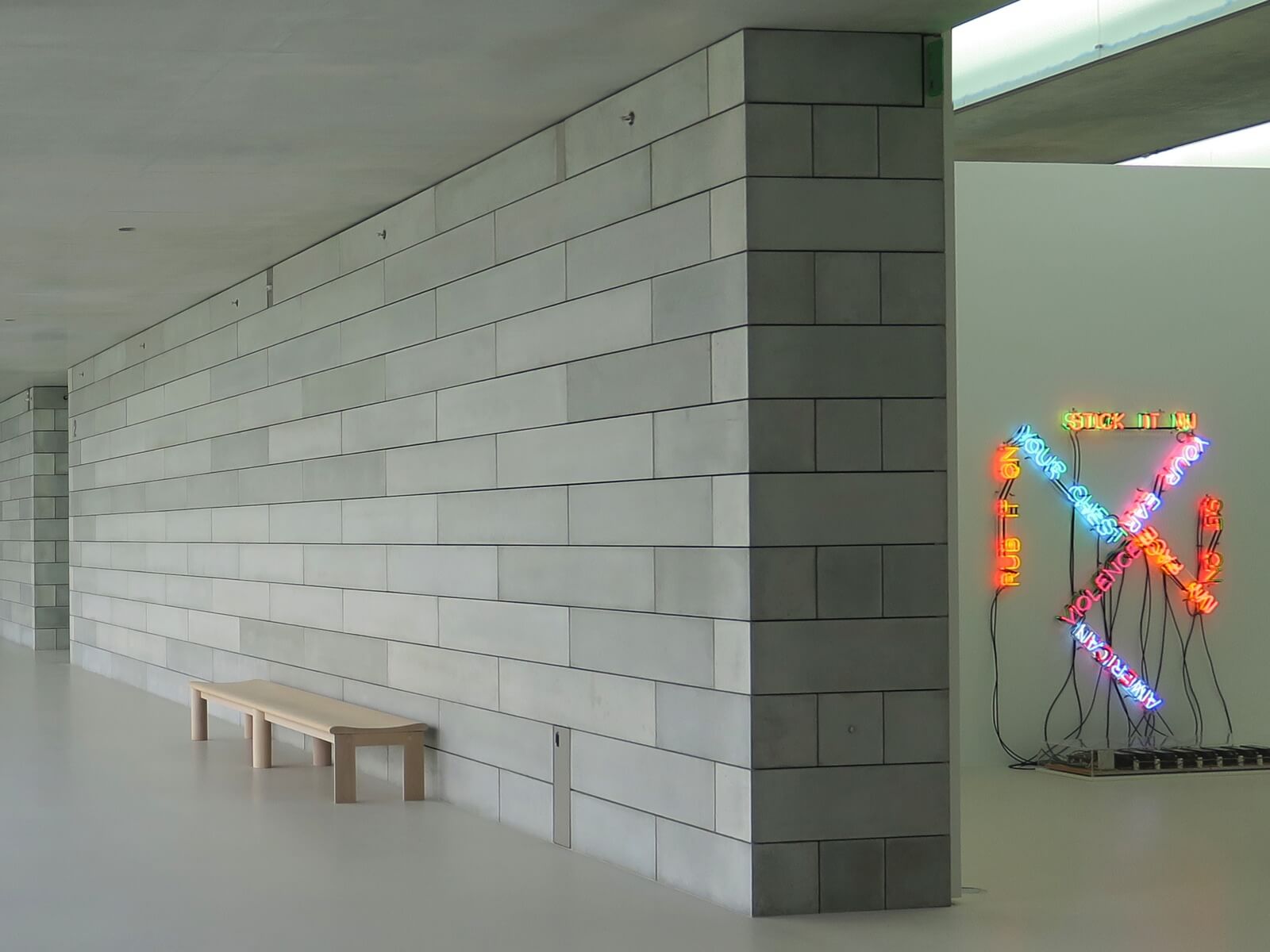
Hallway bench next to gallery featuring Bruce Nauman’s neon sculpture, ‘American Violence’
COURTESY: Paul Clemence
Glenstone – a private contemporary art museum in Potomac, Maryland that is noted for its distinctive setting in a broad natural landscape.
